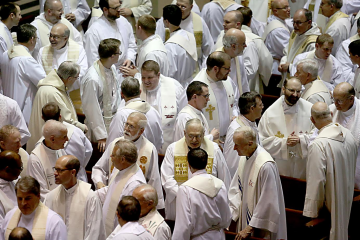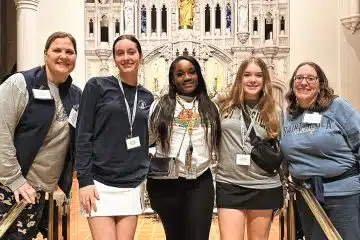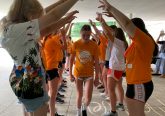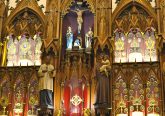Everyday Evangelist: A life of service both at home and abroad
May 11, 2011
By Mary Caffrey Knapke
SAINT MARYS DEANERY — Two centuries ago many German Catholic immigrants settled in the area that today makes up the northern reaches of the Archdiocese of Cincinnati. They cleared dense forests, settled fertile farmland and established the parishes that now lie along the 38-mile Ohio Scenic Byway called the “Land of the Cross-Tipped Churches.”
 |
| Sister Regina Albers (Courtesy photo) |
Among these devout immigrants were the ancestors of Sister of the Precious Blood Regina Albers, who serves as curator at the national Marian Shrine of the Holy Relics and Maria Stein Heritage Museum in Maria Stein. Sister Regina draws on the stories of the past as she reaches out in ministry. In addition to her work at the shrine and museum, she reaches out to Hispanic immigrant communities in the area.
In the 1830s, around the time Sister Regina’s ancestors arrived in Mercer County, a French priest was serving the area, “but he went to the bishop and said, ‘All these Germans are here now, and I can’t communicate with them. They need German priests,’” Sister Regina explained.
Archbishop John Baptist Purcell enlisted the help of Father Francis de Sales Brunner, who brought the Missionaries of the Precious Blood and Sisters of the Precious Blood to the area. The order remains strong in the region today.
Sister Regina continues the tradition of reaching out to immigrants who have fled the poverty of their homeland as she works with Hispanic groups who sometimes find themselves struggling to make sense of a new culture and language. She spent 12 years in Chile, where she did pastoral work and taught English, music and science in elementary schools. As a child, Sister Regina enjoyed listening to stories from the Precious Blood missionaries in Chile, which her mother read after dinner from the Precious Blood Messenger. Shortly after making her final vows at the age of 21, she volunteered to go to Chile, but it was another 12 years before she finally arrived in the country. The 1973 military coup led by Augusto Pinochet presented particular challenges during Sister Regina’s stay in the South American country.
“The day of the coup I went to school not having an idea of what had happened. When I got to school, all the teachers were in the principal’s office hovering around a radio, listening to what was happening in Santiago,” she said. During the military junta, Sister Regina herself was at times stopped by police and searched, and she endured road blocks and the suspension of travel across provincial lines. While she felt more exposed and vulnerable as a foreigner, she said the Chilean people also showed a certain amount of respect for the religious orders.
Now, her fluency in Spanish and an understanding of Hispanic cultures and customs have helped her connect with immigrant groups in parishes in Sandusky and in Adrian. In this archdiocese, she serves on the Northern Region Hispanic Committee, “attempting to find ways to integrate the Hispanics into the community and have the Anglos know the Hispanics more…. I’m totally fluent in Spanish, and I just feel it’s a gift everyone doesn’t have, and there’s a great need for it.”
Sister Regina has also traveled twice to Oaxaca, Mexico, where the Diocese of Puerto Escondido was formed seven years ago. She serves on a team promoting twinning between parishes in the Diocese of Puerto Escondido and the Archdiocese of Cincinnati.
Sister Regina’s work with the Maria Stein shrine and museum is also part of the legacy of the Precious Blood orders in the area. Father J.M. Gartner donated his collection of relics to the Sisters of the Precious Blood in 1875, and a special chapel was built for them in 1892. Listed on the National Register of Historic Places, the shrine is the second largest collection of its type in the country, with more than 1,000 relics on display. Each is sealed and complemented by official documentation from Rome. Ninety-five percent of the shrine’s relics are classified as first class relics, meaning they are from the body of the saint, usually part of a bone. Second class relics are something the saint used, such as clothing, while third–class relics have been touched to the saint or to a first class relic.
One of the most important aspects of these treasures is that they serve as tangible reminders of the lives lived in faith by the many saints represented here, from third century St. Agatha to the Uganda Martyrs who were murdered in the 1800s. More than today’s celebrities, “these are people who have done extraordinary things with their lives,” Sister Regina said. “The life of a saint is something for us to imitate.”
For more information, visit the Maria Stein relic shrine and museum web site at www.mariasteinshrine.org.
Mary Caffrey Knapke can be reached at [email protected].













